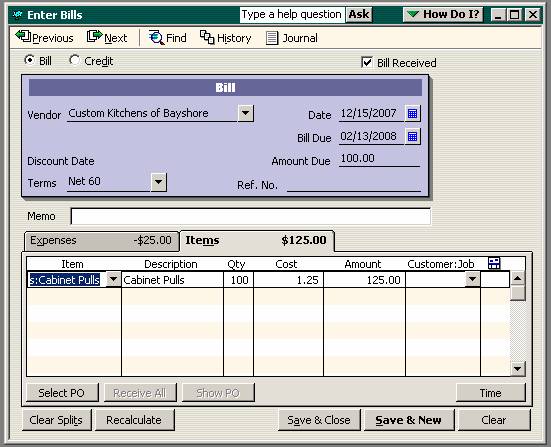
23 Nov Ask the Expert – Freight Clearing Account
Ask the Expert – Freight Clearing Account
Q – My accountant has informed me that I should be capitalizing my freight costs incurred to receive the goods. I am looking for a practical way to do this in QuickBooks. I was considering using the inventory assembly to create one item that includes the product itself and the freight. Do you have a better solution? Submitted by Chuck
A – Your method will work assuming you have all of the information to build the inventory assembly item prior to selling the item, but below are a couple of other alternatives to consider.
Background:
Typically the carrying cost of inventory will include not only the cost of the item itself, but also any other costs that are required to have it ready to sell. In some cases freight may be the only additional cost, in other cases, there may be freight in addition to warehousing, handling, etc.
There is a document available from the secretary of state that deals with determining the cost of inventory.
The details for why freight should be capitalized can also be found in the Accounting Research Bulletin No. 43, Chapter 4. Statement No. 151 amends this bulletin to deal with excessive or abnormal inventory costs incurred. It is effective during fiscal years beginning after June 15, 2005.
How to Handle the Issue in QuickBooks:
An alternative to use inventory assembly type items was mentioned. While this method may be a little cumbersome (enter the product, enter the freight as the same quantity of item as received so the extended value is equal to the freight bill, then go and build an inventory assembly to merge the two amounts together into one new item) it may work OK since bills are received from two different vendors and the result would be a trail that is easy to follow.
Another alternative would be to enter an inventory adjustment (coded to the same general ledger account that was used when the freight bill was entered) to increase the average cost of the inventory item. The quantity would not be changed; it would simply be a value adjustment.
Both of these methods assume that all of the vendor bills (for product and freight) will be received prior to the “new” inventory assembly item being sold. Unfortunately, this is often not the case. As soon as the good arrive, they are shipped to a customer, which means that waiting for the freight bill to arrive may not be practical.
If the freight bill can be reasonably estimated, there is another alternative, using a freight clearing account. This account, typically a Cost of Goods Sold type account, is used both on the bill from the supplier of the goods as well as the bill from the transportation company. Below is an example using 100 goods purchased at $1 each with anticipated freight of $25 and an actual freight bill of $25.25.
When the goods are received, the bill (if paid immediately, the check form could be used with the same method) from the supplier is entered. The trick to this method is that the detail on the item tab is the “burdened” or “loaded” cost of the item and the freight is entered on the expense tab as a negative amount so the bill to the supplier is the correct net amount.


The journal entry for this transaction looks like this:

When the freight bill arrives, it is entered using the Freight Clearing account on the expense tab.

In theory, these two amounts should match. In our example, they do not so there is a small balance left in the freight clearing account. Hopefully this net amount will be immaterial. If it is not, an inventory adjustment would need to be entered to adjust the average cost of the item to actual.


